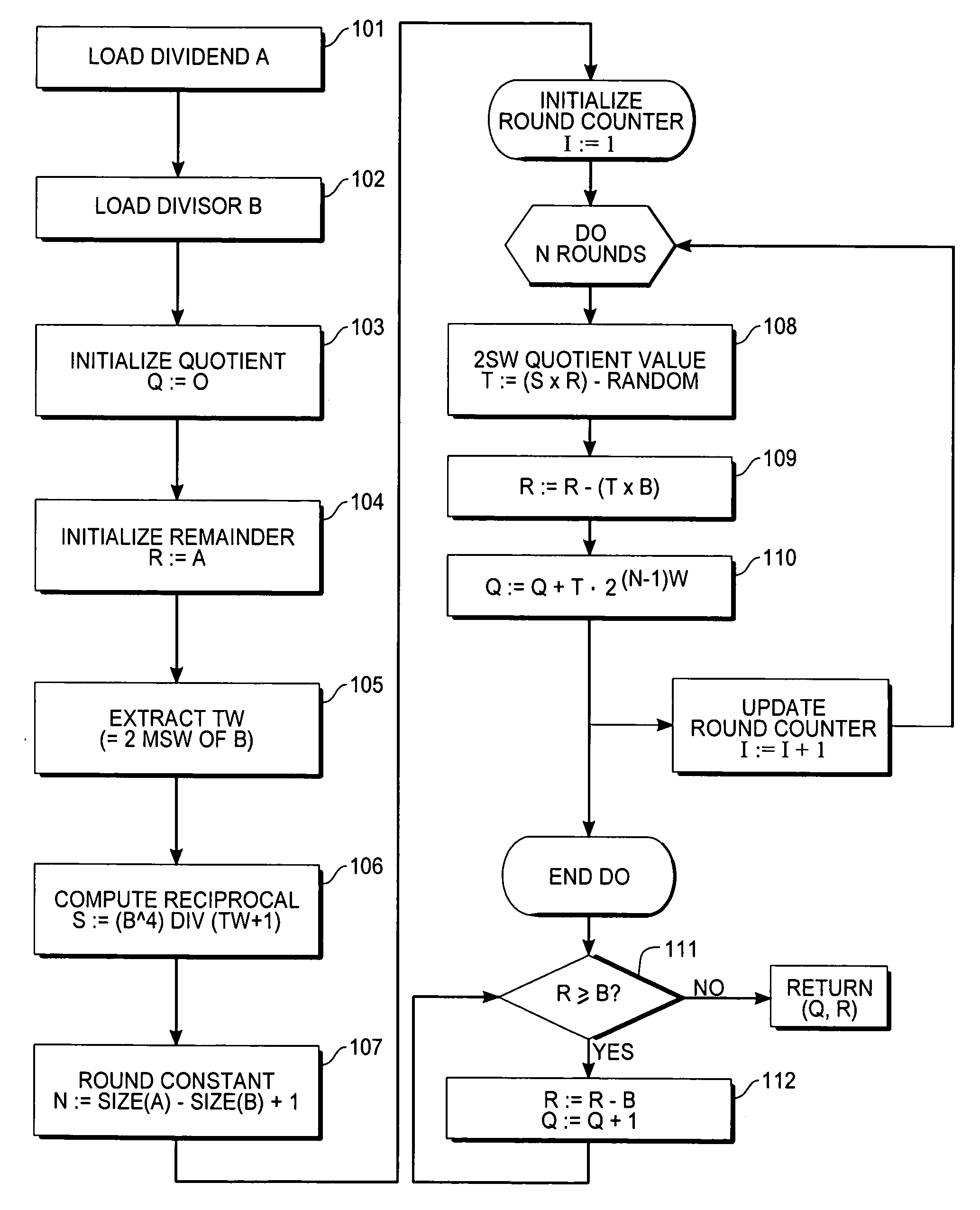Digital computation method involving euclidean division
a digital computation and euclidean technology, applied in the field of arithmetic processing and calculating, can solve the problems of prone to side-channel attacks, based division operations, and become especially time-consuming, and hardware implementation of cryptographic algorithms (such as in risc-based smart cards) may be susceptible to side-channel attacks
- Summary
- Abstract
- Description
- Claims
- Application Information
AI Technical Summary
Benefits of technology
Problems solved by technology
Method used
Image
Examples
Embodiment Construction
[0011] With reference to FIG. 1, after loading the dividend A and divisor B for the computation into hardware registers accessible by a processor core (steps 101 and 102), and initializing the quotient Q (starts at 0 and accumulates) and remainder R (starts at A and decrements) values (steps 103 and 104), the integer division method begins with an overestimation of the divisor B (step 105). In particular, we extract the two most significant words TW from the divisor B, and increment this two-word value by one. The present invention can be applied to numbers of any base b. The explanation given here takes the particular case where the base is a power of two, i.e., b=2W, with W being the word size in bits. The more general case can be readily inferred from the example given. Thus, the reciprocal formula given below becomes S=b4 div (TW+1) for the base b. In a digital processor, numbers represented by a non-binary base (such as a decimal base b=10) may be stored and processed in a code...
PUM
 Login to view more
Login to view more Abstract
Description
Claims
Application Information
 Login to view more
Login to view more - R&D Engineer
- R&D Manager
- IP Professional
- Industry Leading Data Capabilities
- Powerful AI technology
- Patent DNA Extraction
Browse by: Latest US Patents, China's latest patents, Technical Efficacy Thesaurus, Application Domain, Technology Topic.
© 2024 PatSnap. All rights reserved.Legal|Privacy policy|Modern Slavery Act Transparency Statement|Sitemap


